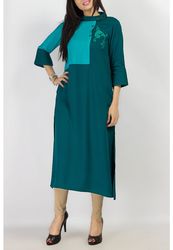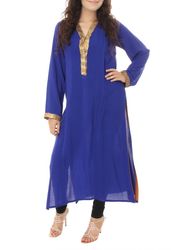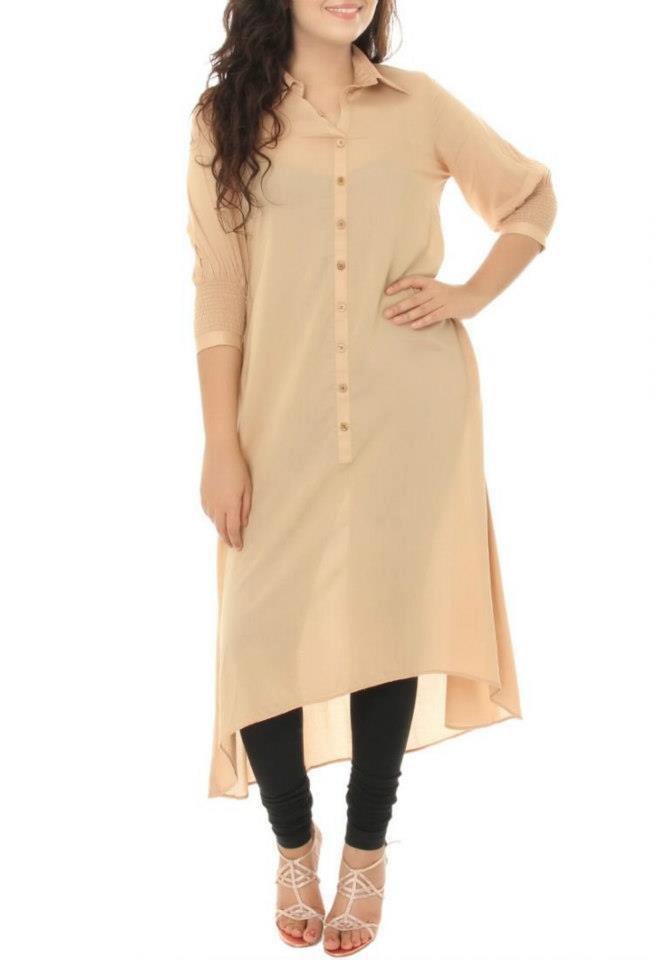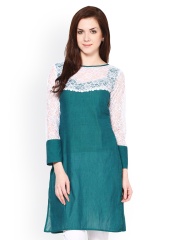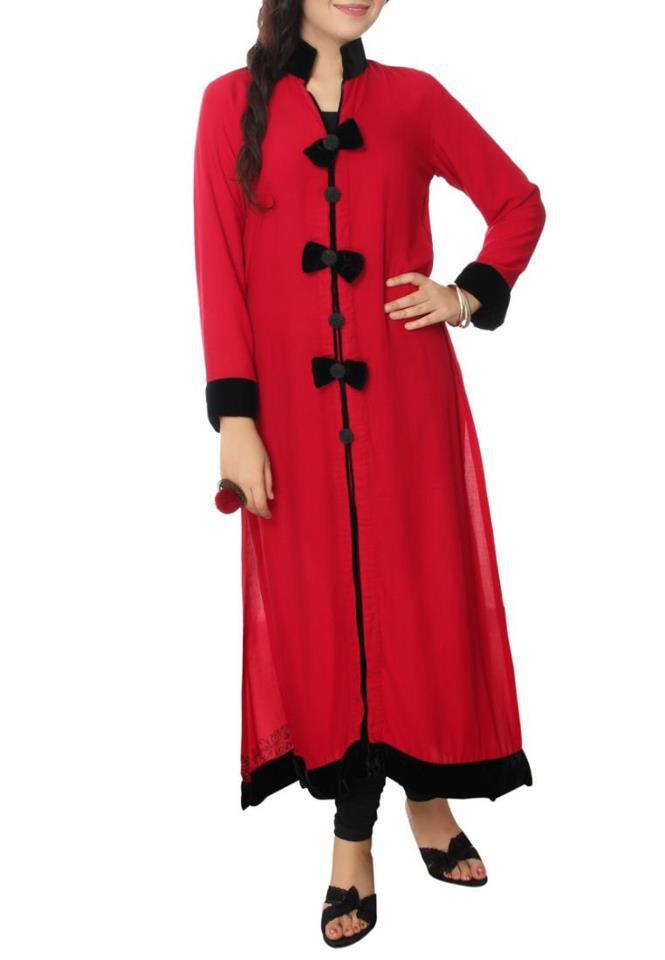Kurta Tops For Ladies Biography
Source:- Google.com.pk
The word "kurta" is a borrowing from Hindustani, and originally from Persian and was first used in English in the 20th century. Kurta is a piece of clothing worn by males, it is usually worn for fashion, tradition and culture. As the Thawb is encouraged to be worn in Saudi Arabia, Pakistani and Indian expatriates rather prefer to wear the Kurta as a close and same version to the Arab clothing.
A kurta worn by females is called a kurti. The kurta is variously known as an angarkha in Gujarat and Rajasthan and a Panjabi in Bengal, Bangladesh and Assam. It is a traditional dress for men in Central, West and South Asia. It is a long shirt worn in whole of Afghanistan, Pakistan, Iran and Northern Indian states namely, Jammu and Kashmir, Punjab, Haryana, Uttar Pradesh, Bihar, Himachal Pradesh, Uttarakhand and Rajasthan. A similar dress is worn traditionally in Gujarat is somewhat shorter in length than a usual Kurta and has a wider end similar to lower part of a Ghagra. In India, Hindus wear it along with Dhoti or Paijama whereas Muslims wear it along with Shalwar or Paijama. Among young boys it is common to wear Kurta with Jeans.Women wear kurtis as blouses, usually over jeans.These kurtis are typically much shorter than the traditional garments and made with a lighter materials, like those used in sewing kameez.
The sleeves of a traditional kurta fall straight to the wrist; they do not narrow, as do many Western-cut sleeves. Sleeves are not cuffed, just hemmed and decorated. The front and back pieces of a simple kurta are also rectangular. The side seams are left open for 6-12 inches above the hem, which gives the wearer some ease of movement. The kurta usually opens in the front; some styles, however, button at the shoulder seam. The front opening is often a hemmed slit in the fabric, tied or buttoned at the top; some kurtas, however, have plackets rather than slits. The opening may be centered on the chest, or positioned off center.
A traditional kurta does not have a collar. Modern variants may feature stand-up collars of the type known to tailors and seamstresses as "mandarin" collars. These are the same sort of collars seen on achkans, sherwanis, and Nehru jackets. Indian subcontinent has a very popular styling of Mukatsari kurta getting its origin from the province of Mukatsar in Punjab (India) which is famous for its slim fitting cuts and smart fit designs. It is very popular among young politicians. Kurtas are typically fastened with tasseled ties, cloth balls and loops, or buttons. Ready-made kurtas often avoid the use of horn buttons, in deference to Hindu sentiments; such buttons are frequently made from cow or buffalo hooves or horns. Buttons are often wood or plastic. Kurtas worn on formal occasions might feature decorative metal buttons, which are not sewn to the fabric, but, like cufflinks, are fastened into the cloth when needed.
Kurta Tops For Ladies Ladies Kurta Neck Design Images Style Neck Designs Collection Images Photos
Kurta Tops For Ladies Ladies Kurta Neck Design Images Style Neck Designs Collection Images Photos
Kurta Tops For Ladies Ladies Kurta Neck Design Images Style Neck Designs Collection Images Photos
Kurta Tops For Ladies Ladies Kurta Neck Design Images Style Neck Designs Collection Images Photos
Kurta Tops For Ladies Ladies Kurta Neck Design Images Style Neck Designs Collection Images Photos
Kurta Tops For Ladies Ladies Kurta Neck Design Images Style Neck Designs Collection Images Photos
Kurta Tops For Ladies Ladies Kurta Neck Design Images Style Neck Designs Collection Images Photos
Kurta Tops For Ladies Ladies Kurta Neck Design Images Style Neck Designs Collection Images Photos
Kurta Tops For Ladies Ladies Kurta Neck Design Images Style Neck Designs Collection Images Photos
Kurta Tops For Ladies Ladies Kurta Neck Design Images Style Neck Designs Collection Images Photos
Kurta Tops For Ladies Ladies Kurta Neck Design Images Style Neck Designs Collection Images Photos







.jpg)





